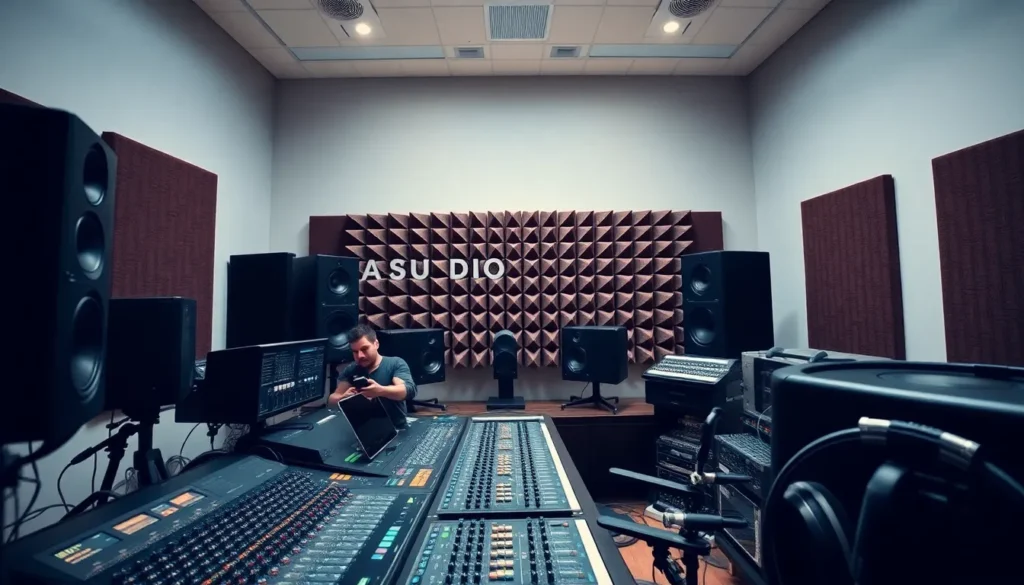When it comes to sound quality, balanced audio technology is like the secret sauce that takes your listening experience from zero to hero. Imagine enjoying your favorite tunes without annoying hums, buzzing noises, or distortion. That’s the magic of going balanced. In this text, we’ll explore the intriguing realm of balanced audio connections, how they work, and why they should be your go-to choice for achieving that pristine sound you crave. So, buckle up, sound enthusiasts. We’re about to dive deep into the tech that tunes your ears to perfection.
Table of Contents
ToggleUnderstanding Balanced Audio: An Overview

Balanced audio is all about keeping your sound clean and clear by minimizing interference. But what does that mean, exactly? To understand balanced audio, you need to know that it uses three conductors instead of just two. Think of it as having your cake and eating it too. These three conductors consist of a positive, a negative, and a ground wire. The positive and negative wires carry the audio signal in opposite phases, which helps cancel out any noise picked up along the way. In essence, when you connect your devices with balanced audio cables, you allow the audio signals to enjoy a smooth, distortion-free ride.
This technology isn’t new: it dates back to the 1950s. But, its relevance skyrocketed with the rise of advanced sound systems in both professional and consumer environments. Whether you’re mixing music in a studio or plugging into a high-end home theater system, understanding balanced audio enables you to appreciate the clarity and richness of your sound.
How Balanced Audio Technology Works
So, how does balanced audio technology actually work? The magic lies in the way audio signals travel through the wires. In a typical unbalanced setup, audio signals can easily pick up electromagnetic interference. This noise can muck up your sound, and nobody wants to hear a guitar solo ruined by static.
In a balanced system, the audio is transmitted via a differential signal. This means the positive and negative wires can effectively cancel out hums and other unwanted signals.
Here’s a quick rundown of the process:
- Signal Creation: The audio source generates a signal, which is sent through both the positive and negative wires.
- Cancellation: If any noise is introduced during transmission, it affects both wires equally.
- Differential Amplification: At the receiving end, a balanced input stage amplifies the original signal, while rejecting any noise, resulting in clear and accurate sound reproduction.
The result? A sound that’s rich and dynamic, with very little background noise. If only everything in life could be this simple, like ordering a pizza without pineapple.
Benefits of Using Balanced Audio Connections
There are several compelling reasons to make the switch to balanced audio connections. First and foremost is sound quality. With balanced connections, users experience far less noise interference. This means that your acoustic guitar won’t sound like it’s tuning in from outer space.
Another significant advantage is the ability to run longer cable lengths without losing quality. Traditional unbalanced cables start introducing hiss and noise as the length increases. Balanced versions, on the other hand, can stretch up to several hundred feet while still delivering clarity. So, next time you’re jamming with your band, expect a reliable sound even from a distance.
Also, balanced cables are often more durable and resilient to wear and tear. They’re built to last and are a favored choice in professional environments. In lighting-fast tours or rigorous studio sessions, the last thing sound engineers want is faulty cables throwing a wrench into the mix.
To sum it up: if great sound quality, extended cabling, and durability are what you’re after, then balanced audio connections are your best friend.
Common Applications of Balanced Audio Technology
Balanced audio technology finds applications in many arenas. For instance, recording studios heavily rely on balanced connections to achieve pristine sound quality during mixing and mastering. Instruments such as microphones, guitars, and keyboards often use balanced audio to minimize noise.
Live sound setups also leverage this technology. Think of large concert venues where every detail matters. Engineers use balanced connections to ensure the sound remains crisp, even in noisy environments. Audiences expect nothing less, and professionals deliver.
Home theaters have caught on too. Many audiophiles opt for balanced equipment to create immersive sound experiences that rival the cinema. After all, who wouldn’t want their living room to feel like a Hollywood premiere?
Besides, broadcast and recording equipment extensively uses balanced audio for enhanced reliability. Ensuring every word and note is heard clearly can make or break a production. It’s undeniable: balanced audio is woven into the fabric of sound quality across many industries.
Choosing the Right Equipment for Balanced Audio
When it comes to setting up a balanced audio system, choosing the right equipment is crucial. Start with cables that are specifically designed for balanced signals, like XLR or TRS cables. They’re the industry standard and provide that high-quality sound we’re all looking for.
Next, consider your audio interfaces and mixers. Look for devices that support balanced connections: they will often have dedicated inputs and outputs for XLR and TRS. A quality audio interface can elevate your sound from mundane to magnum opus.
Microphones also play a fundamental role. Invest in dynamic or condenser microphones that have balanced output. You’ll be amazed at how much of a difference they can make in your recordings. And don’t forget preamps. A good preamp can truly boost your audio, setting you up for success as you dive deeper into the art of production or performance.
In short, selecting the appropriate gear is key to harnessing the full potential of balanced audio technology. Choose wisely, and your ears will thank you.
Future Trends in Balanced Audio Technology
As technology continues to advance, balanced audio technology is set to evolve as well. One trend to keep an eye on is the integration of balanced audio systems with smart devices. As the smart home industry grows, manufacturers are developing audio systems that use balanced connections to deliver superior sound through automated devices.
Another exciting advancement is the ongoing improvement in wireless technology. While traditional balanced cables dominate the current landscape, wireless solutions that maintain the benefits of balanced audio are emerging. Imagine experiencing amazing sound clarity without being tethered to the wall.
Also, the music production landscape is also shifting. As high-resolution audio formats become more popular, the demand for balanced technology will continue to rise. Producers and artists alike are pressing for the best quality possible, ensuring that the listener experiences impeccable sound.
In the years to come, balanced audio technology is likely to become more prevalent in both consumer and professional markets. As manufacturers continue to innovate, we can expect that this technology will drive future developments within the sound industry.





